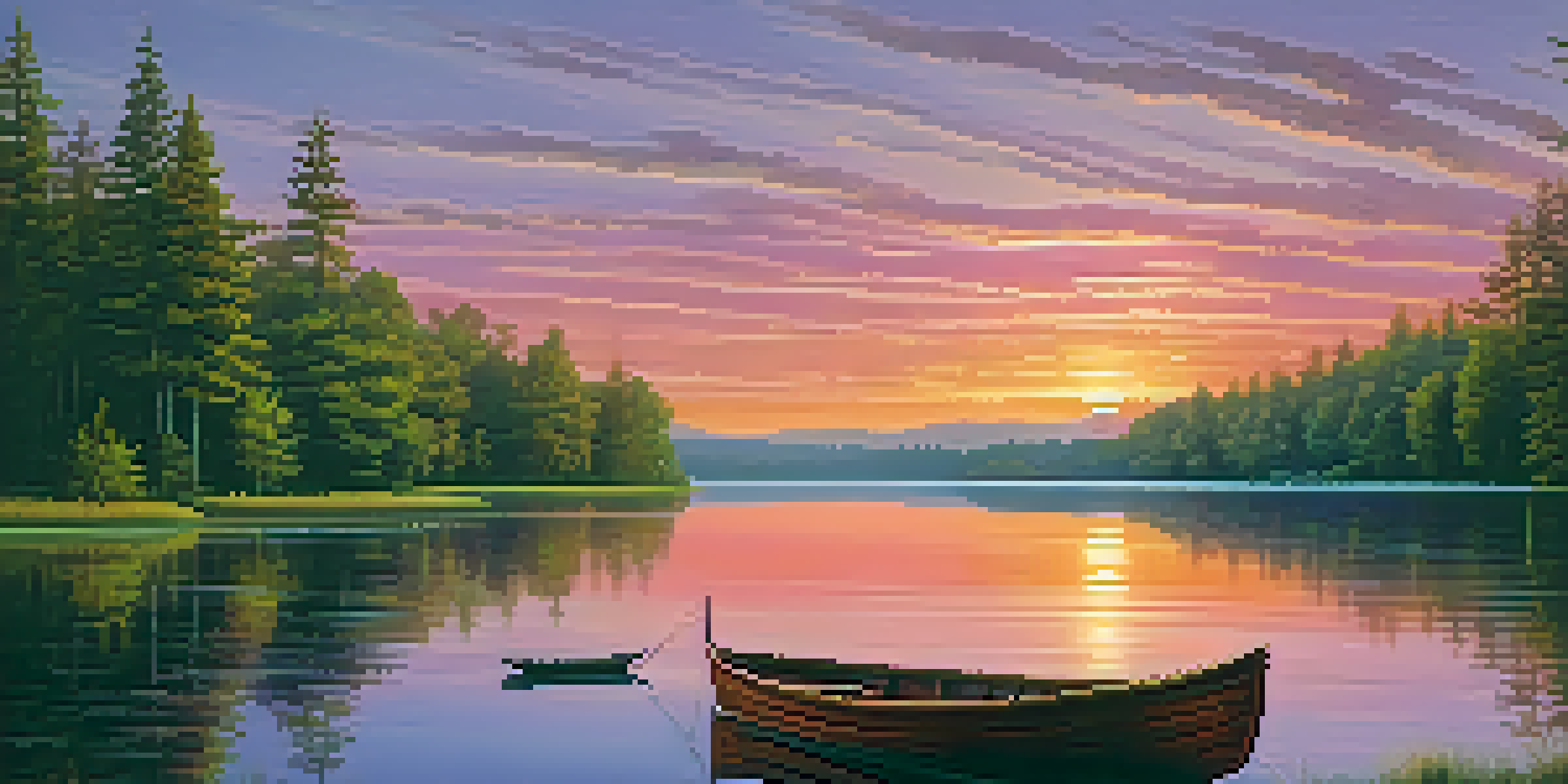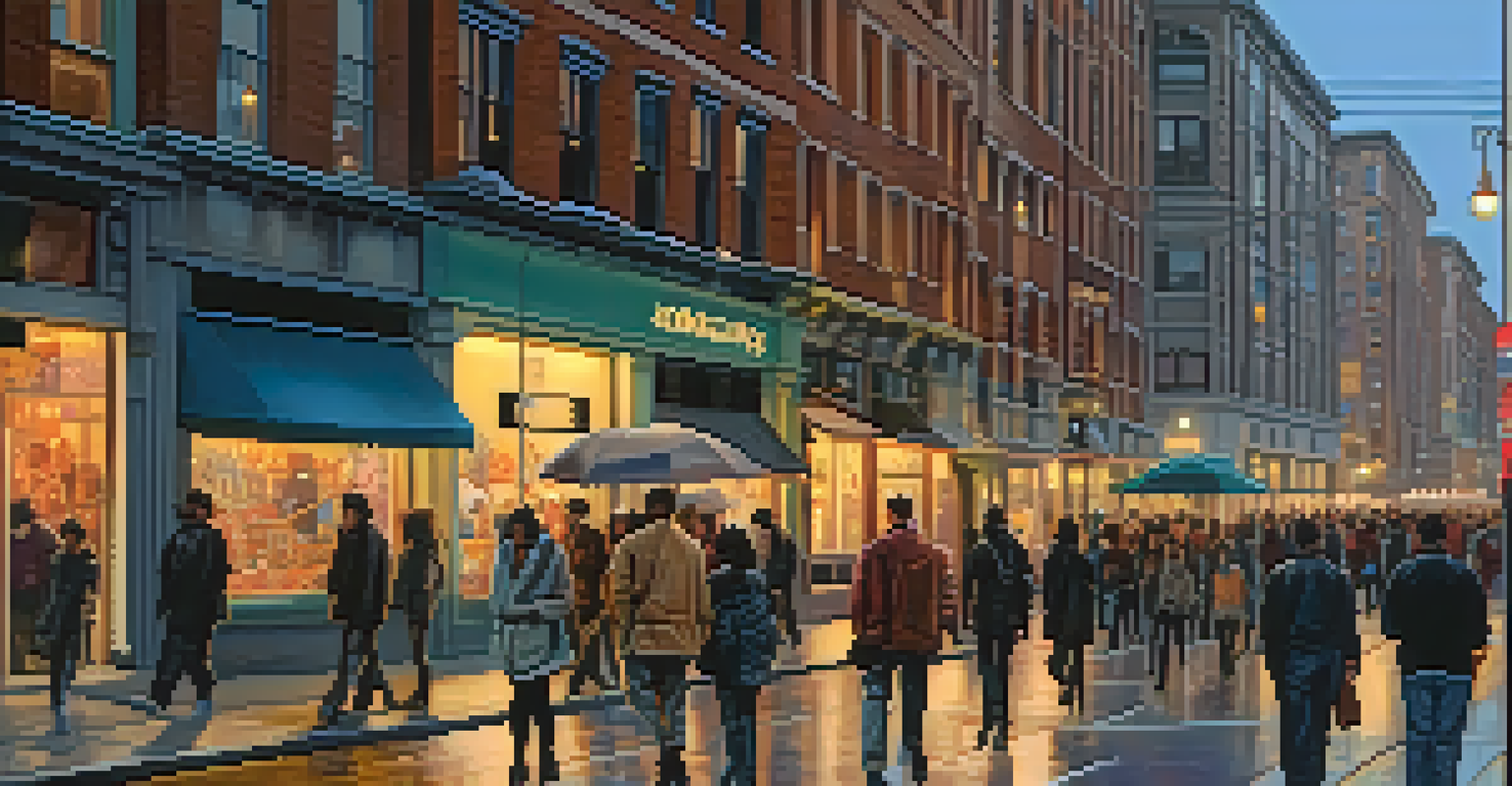The Role of AI in Creating and Curating Modern Paintings

Understanding AI's Role in Modern Art Creation
Artificial Intelligence, or AI, has become a powerful tool in the art world, pushing boundaries that artists have traditionally explored. By using algorithms and machine learning, AI can generate images, colors, and patterns that challenge our perceptions of creativity. For instance, AI tools like DeepArt and Artbreeder allow users to create unique artworks simply by inputting their preferences.
Art is a collaboration between human and machine, where creativity knows no bounds.
The collaborative relationship between artists and AI is fascinating. Artists often use AI-generated pieces as a starting point, adding their own flair and emotional depth to the mix. This blend of human insight and technological innovation leads to the emergence of artworks that are both novel and deeply personal.
Moreover, AI's capacity to analyze vast amounts of data means it can identify trends and styles that resonate with audiences. This capability not only aids artists in their creative process but also encourages them to experiment with new techniques and concepts, ultimately expanding the landscape of modern art.
AI in Art Curation: A New Era of Discovery
Curation has historically been a subjective process, relying heavily on human expertise and individual taste. However, AI is revolutionizing this field by providing data-driven insights that enhance the curation process. For example, AI systems can analyze audience engagement and preferences, helping curators select works that will resonate with viewers.

AI's ability to sift through massive collections of artwork also supports curators in discovering hidden gems. Imagine a curator who can instantly access thousands of paintings, filtering them based on specific themes, styles, or colors. This efficiency not only saves time but also uncovers pieces that may have been overlooked in traditional settings.
AI Enhances Artistic Creation
AI is revolutionizing art by generating unique works and allowing artists to blend technological innovation with personal expression.
Additionally, AI can offer personalized art recommendations to viewers, creating a tailored experience that enhances appreciation for art. By suggesting works based on individual tastes, AI bridges the gap between audiences and artists, making art more accessible and engaging for everyone.
The Intersection of Technology and Artistic Expression
At its core, art is about expression, and technology has always played a role in shaping that expression. From the invention of the camera to digital painting tools, each technological advancement has influenced how artists create. Today, AI stands as a pivotal player in this evolution, offering new mediums and methods for artistic exploration.
Technology is best when it brings people together.
Artists are increasingly using AI-generated elements to provoke thought and dialogue. For instance, pieces that incorporate AI may challenge viewers to consider what it means to be creative or the role of machines in our lives. This intersection of tech and art not only inspires new artworks but also encourages deeper discussions about the future of creativity.
Moreover, the use of AI in art raises important questions about authorship and originality. If a machine can create an artwork, who owns it? These discussions are crucial in understanding the evolving landscape of art and the implications of integrating AI into the creative process.
AI's Impact on Artistic Styles and Movements
AI is not just a tool for creating art; it's also influencing the styles and movements that emerge in contemporary art. By analyzing existing artworks, AI can identify patterns and trends that inform new artistic directions. This analysis can result in the birth of entirely new genres that blend traditional techniques with modern technology.
For example, an AI model trained on Impressionist paintings could generate new works that mimic those styles while introducing unexpected elements. This fusion creates a dynamic interplay between historical influences and futuristic interpretations, allowing artists to explore uncharted territories.
AI Transforms Art Curation
AI provides data-driven insights that enhance the curation process, making art more accessible and personalized for viewers.
Furthermore, AI's role in style evolution encourages collaboration among artists across various disciplines. Musicians, painters, and digital creators can come together to explore how AI can shape their work, ultimately fostering a more interconnected and innovative art community.
Ethical Considerations in AI Art Creation
As AI becomes more prevalent in art creation, ethical concerns are coming to the forefront. Issues like copyright, ownership, and the originality of AI-generated art are sparking debates among artists, curators, and collectors. Understanding these complexities is essential for navigating the new landscape of art in the age of AI.
For instance, if an AI generates a painting based on a specific artist’s style, who holds the rights to that work? This question highlights the need for clear guidelines and frameworks that protect both human artists and technological innovations. Addressing these challenges will be crucial as AI continues to make its mark in the art world.
Additionally, the use of AI can raise concerns about the authenticity of art. For some, the essence of art lies in the human experience and emotional connection behind each piece. As AI takes a more significant role in art creation, it is essential to maintain a balance between technological advancement and the human touch that makes art truly special.
Embracing AI: Opportunities for Emerging Artists
For emerging artists, AI presents a wealth of opportunities to explore their creativity. With accessible tools and platforms, artists can experiment with AI-generated content without the need for extensive technical knowledge. This democratization of technology allows for a broader range of voices and perspectives in the art world.
Moreover, AI can serve as a source of inspiration. Many artists find that collaborating with AI helps them break through creative blocks and discover new ideas. By seeing how AI interprets their input, artists can gain fresh insights and develop unique styles that resonate with audiences.
Ethics of AI in Art
The rise of AI in art creation raises important ethical questions regarding copyright, ownership, and the authenticity of artworks.
As AI continues to evolve, it’s likely that we’ll see an increase in exhibitions and events showcasing AI-infused art. This trend not only provides a platform for emerging artists to gain exposure but also challenges traditional notions of what art can be, fostering a vibrant and diverse artistic landscape.
The Future of AI in the Art World
Looking ahead, the role of AI in the art world is poised to expand even further. As technology advances, we can expect to see more sophisticated AI tools that enhance both the creation and curation of art. This evolution will likely lead to the development of new artistic forms and collaborative practices that we can only begin to imagine.
One exciting prospect is the potential for AI to help preserve and restore art. With machine learning algorithms, it may be possible to analyze the condition of artworks and recommend restoration techniques, ensuring that pieces of cultural significance endure for future generations. Such advancements could redefine how we engage with art history.

Ultimately, the integration of AI into the art world invites us to rethink our relationship with creativity. As we embrace these innovations, we have the opportunity to foster a deeper understanding and appreciation of art, making it an even more integral part of our lives.